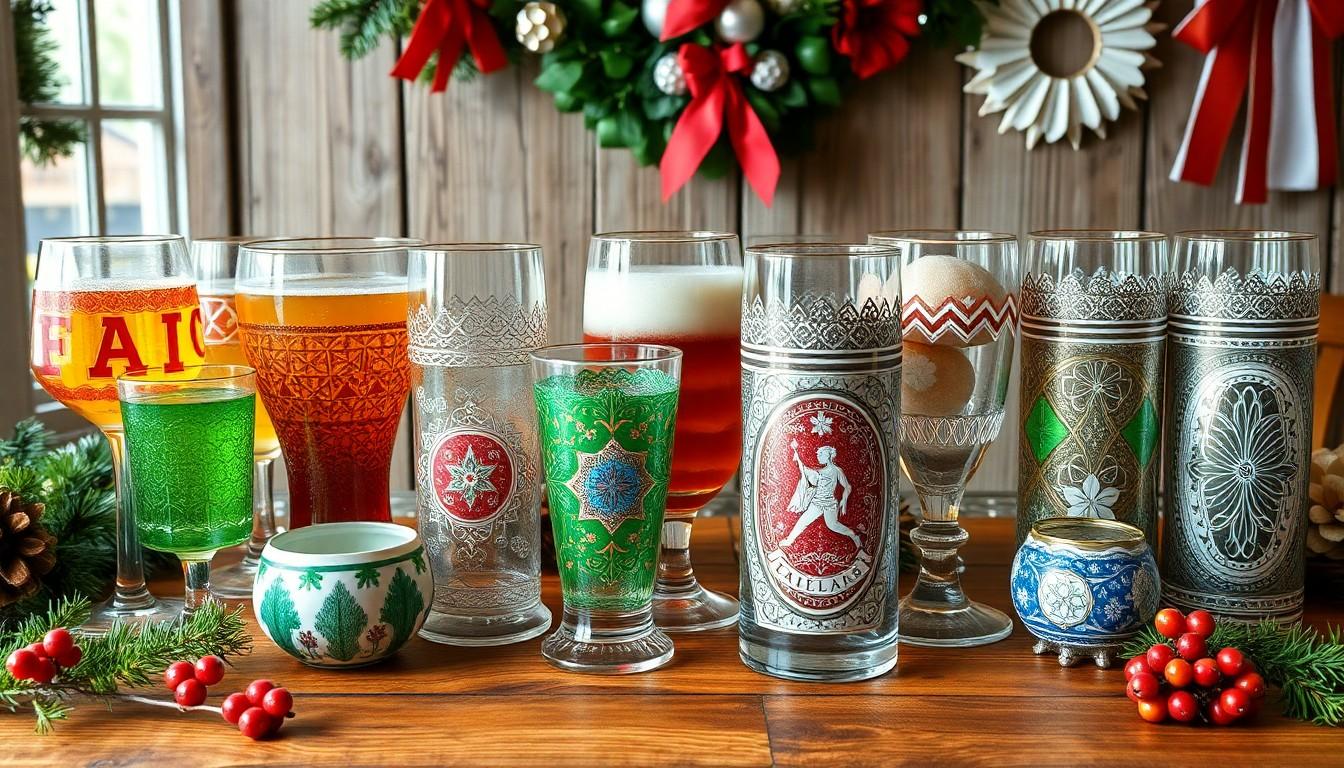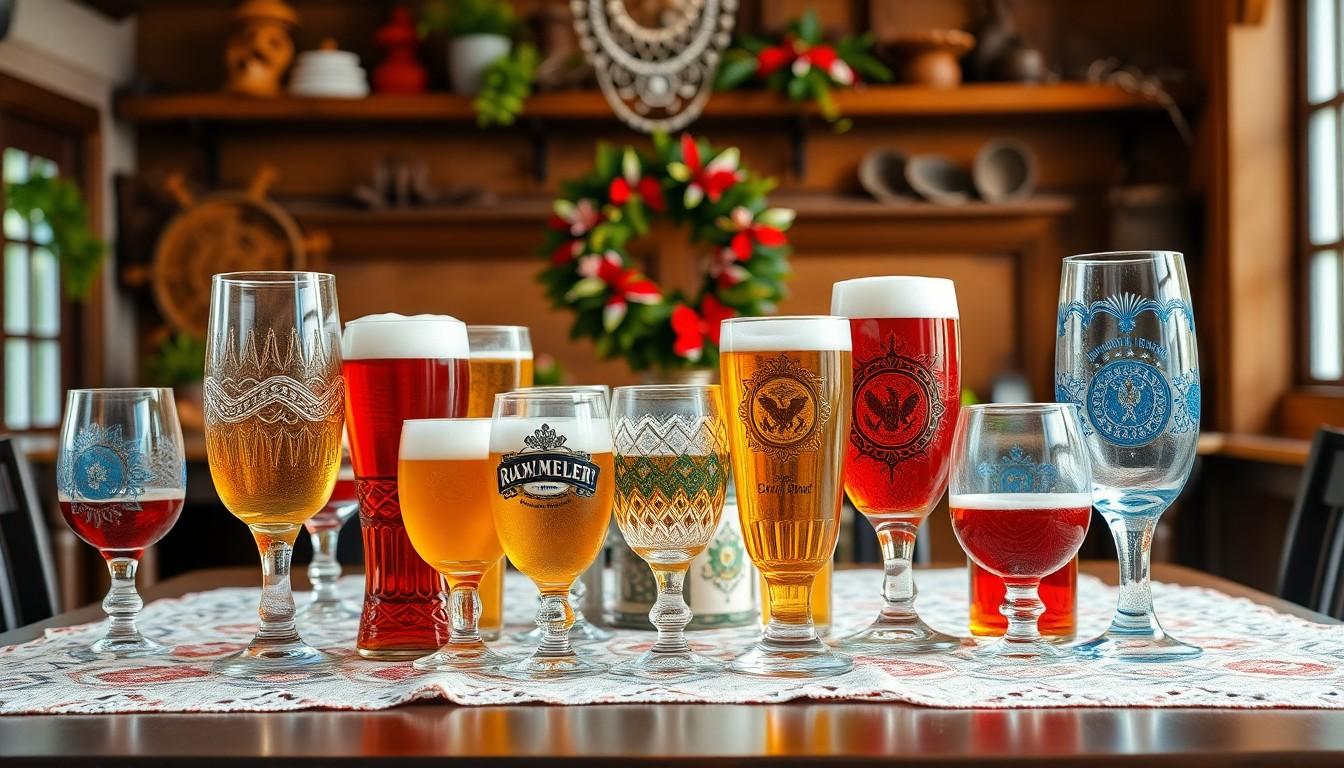Rämergläser, those charming little German drinking glasses, are more than just vessels for your favorite beverages; they’re a celebration of tradition and craftsmanship. Picture this: you’re at a lively gathering, and someone raises a beautifully crafted rämerglas filled with a frothy brew. Suddenly, you’re not just sipping; you’re part of a story that’s been told for generations.
Overview of Rämergläser
Rämergläser feature distinctive designs and serve as important symbols of German culture. These traditional glasses often showcase exquisite craftsmanship, reflecting generations of artistry. Often made from local glass, they exhibit unique shapes and textures that enhance both style and functionality.
Cultural significance surrounds rämergläser, as they play a vital role in social gatherings. They connect people during celebrations, fostering a sense of community and shared tradition. Many variations exist, with each region presenting its own styles and embellishments. For example, some designs incorporate intricate patterns or vibrant colors, adding aesthetic appeal.
Rämergläser also contribute to the overall experience of beverage enjoyment. Their form enhances the sensory aspects of drinking, from aroma to temperature retention. This attention to detail elevates simple beverages like wine and beer into a more refined experience.
The history of these glasses stretches back several centuries, showcasing their evolution over time. Initially, they served practical purposes, but artistic expression became a paramount aspect as the demand grew. Today, both collectors and enthusiasts cherishing these pieces further solidify their cultural importance.
Caring for rämergläser involves specific practices to ensure longevity. Gentle handwashing with mild detergents protects the glass from scratches and damage. Climate also plays a consideration; avoiding extreme temperature changes extends the life of these cherished items.
Rämergläser represent more than mere drinking vessels. They embody a rich cultural heritage that enhances social interactions through their design and historical context.
History of Rämergläser

Rämergläser boast a fascinating history that traces back several centuries. These glasses evolved from simple utilitarian vessels into cherished symbols of artistry and craftsmanship.
Origin and Evolution
Rämergläser originated in Germany during the Middle Ages. Initially crafted for practical use, these glasses featured designs that reflected local glass-making traditions. As demand for unique and decorative drinking vessels increased, artisans began experimenting with form and decoration. Over time, regional variations emerged, each showcasing distinct patterns and colors. This evolution transformed rämergläser into sought-after collector’s items, blending functionality with artistic flair.
Cultural Significance
Rämergläser carry profound cultural significance throughout Germany. During festivals and communal gatherings, these glasses enhance social interactions and strengthen bonds between individuals. Unique designs and regional characteristics celebrate local heritage, making each glass a representation of tradition. Through their use, people engage in storytelling and share experiences, reinforcing community values. These glasses also elevate the sensory experience of beverages, allowing tradition to flourish in every sip.
Types of Rämergläser
Rämergläser come in various styles, reflecting both traditional craftsmanship and modern innovation. Understanding these types enhances appreciation for their cultural significance.
Traditional Designs
Traditional rämergläser showcase intricate patterns and shapes, deeply rooted in regional histories. These glasses often feature motifs that tell stories or depict local customs. The craftsmanship emphasizes skillful engraving, creating textured surfaces and vibrant colors. Glassmakers use techniques passed down through generations, ensuring each piece embodies authenticity. Commonly seen at social gatherings, these designs foster a connection to the past, enriching the drinking experience. Examples include the classic cobweb and lattice patterns, each providing distinct aesthetics while celebrating essential cultural heritage.
Modern Variations
Modern rämergläser introduce innovative styles that appeal to contemporary tastes. Designers explore new forms and functions, resulting in unique shapes that prioritize user experience. The incorporation of vibrant colors and artistic elements distinguishes these newer creations from traditional designs. Many modern variations retain functionality while enhancing visual appeal, making them perfect for home decor or special events. Some versions even feature materials that improve durability, ensuring longevity in daily use. Collectors appreciate this blend of functionality and artistry, making modern rämergläser a popular choice among enthusiasts.
Benefits of Using Rämergläser
Rämergläser enhance the beverage experience through their unique designs. Users enjoy improved aroma and temperature retention due to their shapes and materials. Enhanced aesthetics elevate casual drinking occasions into refined experiences that foster conversation and connection.
Cultural significance plays a vital role in the appeal of rämergläser. Each glass reflects regional craftsmanship, showcasing intricate patterns or vibrant colors that tell stories and celebrate local traditions. Collectors often seek out specific designs, valuing their historical context and artistic merit.
Social gatherings benefit greatly from the use of rämergläser. These glasses encourage bonding during communal celebrations, as they create an atmosphere centered on sharing and storytelling. Individuals participating in these events often reminisce about history and heritage, enhancing the overall connection among guests.
Durability serves as another advantage of rämergläser. Made from local glass materials, these glasses withstand daily use while maintaining their beauty. Gentle handwashing practices ensure longevity, making them practical as well as decorative.
Modern variations of rämergläser attract contemporary enthusiasts. Innovative styles incorporate artistic elements that appeal to current tastes while retaining traditional functionality. This blend of history and modernity appeals to both new collectors and seasoned aficionados.
Enthusiasts find that owning rämergläser offers more than just drinking vessels. Each glass embodies a piece of cultural heritage, enriching personal collections and elevating social experiences. These benefits emphasize the importance of choosing rämergläser for any gathering or occasion.
Conclusion
Rämergläser are more than just drinking vessels; they embody a rich tapestry of cultural heritage and artistry. Their unique designs and craftsmanship not only enhance the drinking experience but also foster connections among individuals during social gatherings. Each glass tells a story of regional traditions and the skilled artisans behind them.
As collectors and enthusiasts continue to appreciate both traditional and modern variations, rämergläser remain a cherished part of German culture. Their ability to transform casual moments into meaningful interactions underscores their significance in today’s world. Embracing these glasses means celebrating a legacy that enriches both personal collections and communal experiences.


